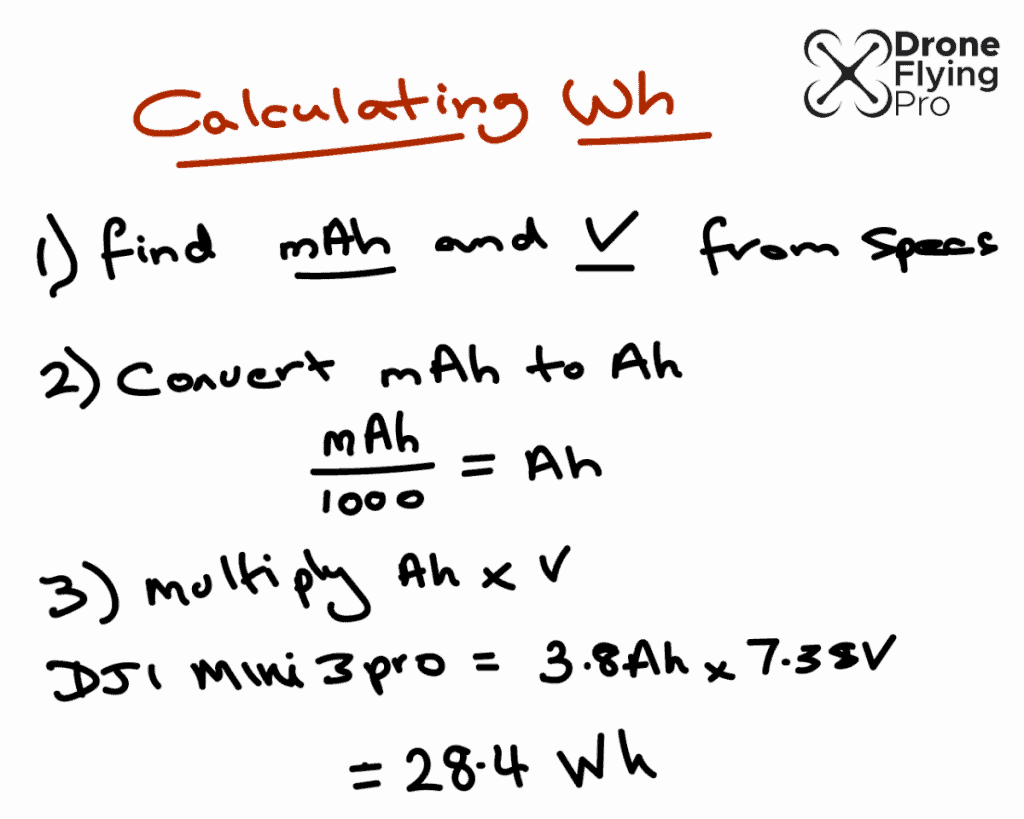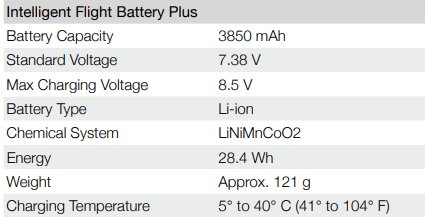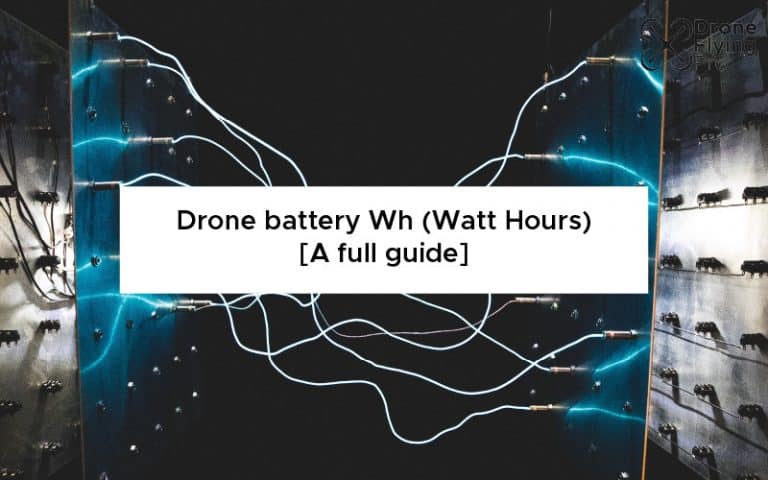All of the numbers surrounding drone batteries can be very confusing. Drone batteries are often accompanied by numbers reporting their capacity, voltage, weight, charging power, battery type and energy.
Drone battery Wh (watt hours) is a measure of how much power you can get out of your drone battery over a certain time. DJI drone battery Watt hours range from 8 to 130 watt-hours. Larger drones require larger watt hours (capacity) to run due to their high energy requirements.
Airlines also understand that this is a much more accurate way of reporting the amount of energy stored in a battery and, therefore, use this as a way to legislate against carrying high-capacity batteries on board.
What are Watt Hours?
To fully understand what a drone battery Watt hours mean we must first define what a watt is and how that relates to the drone battery capacity.
What is a watt?
A watt is a unit of power, and power is the rate at which energy flows. If you think of a watt as a measurement of flow, we can determine whether a device will need a big flow of electricity to work or a small amount.
The larger wattage a drone battery is the larger and more energy-hungry motors it can power. Smaller drones have lower wattage requirements.
Calculating the is as simple as multiplying the voltage and amperage of a battery together.
For example, 15 V x 3.5 A = 52.5 W.
Watt hours (Wh)
One of the most important things you need to know about the drone battery is how much power you can get out of it each use.
That number is represented by Watt-hours or Wh.
It is one way that you can measure its capacity. Because of this, many airlines use watt hours to legislate against the size of battery that you can take on board. More about this later.
For example, if you have a battery that is 100 W running over four hours you will use 400 Watt hours.
For a drone battery with 77 Watt hours (like the DJI Mavic 3), you will be able to power devices at a maximum of 100 W for an average of 42 minutes. Incidentally, this is approximately the length of time you can fly this drone (46 min).
Therefore, we can assume that the DJI Mavic three motors and internal energy systems require a little less than 100 W of power to run.
How to calculate Watt hours
The formula for calculating watt-hours is Watts x Hours = Wh.
How do you convert mAh to Wh?
To convert milliamp hours to Watt hours you need to multiply it with the voltage of the drone battery.

For example, the DJI mini 3 Pro has a battery capacity of 3850 mA hours.
First, convert to the right units for our calculation (Ah): That is 3.85 Amp hours.
3.8 multiplied by the standard voltage of the battery of 7.38 V is equal to 28.4 W hours:
3.8 Ah x 7.38 V = 28.4 Wh
This is exactly the same data reported in the manual.

You can use this calculation for any drone battery just remember to change the milliamp hours to amp hours by dividing by 1000. Changing these units are very important for getting an accurate calculation.
How many Watt hours is a drone battery?
The Watt hours of a drone battery will vary depending on the power requirements of the drone. The power requirements of the drone are closely related to its weight and the power of the motors and internal electronic system to keep the drone in the air.
Below, we will see that the DJI battery Watt hour range goes from 8.09 to 129.96 Wh from their smallest drone, the DJI mini 2, to their largest, the Phantom 4 Pro.
How many Watt hours is a DJI battery?
Here is a list of all of the current consumer level DJI drones and the number of Watt hours reported in the specifications for their intelligent flight batteries.
| DJI Drone | Watt Hours (Wh) |
|---|---|
| Mavic 3 | 77 |
| Air 2S | 40.42 |
| Mini 3 Pro | 18.10 (28.4 Plus) |
| Mini 2 | 17.32 (8.09 JP version) |
| Air 2 | 40.42 |
| Avata | 35.71 |
| FPV | 44.4 |
| Phantom 4 Pro | 89.2 |
| Inspire 1 | 129.96 |
You can see that the number is very closely related to the size of the drone with the smallest drone having a much lower battery capacity than the much larger drones.
Flight carry on limits – Watt hours
The current rules set by the American transport security administration and the FAA state that for batteries less than 100 Watt hours you can carry as many batteries as you wish. Please be aware that loose batteries are not allowed in checked bags and must be carried in your carry on luggage.
“Large batteries are prohibited. Medium-sized batteries are limited to 2, and there is no maximum on Small batteries, ie less than 100 Watt hours, though we recommend carrying less than 20.
Note that with regards to the sizes mentioned, small is a battery with less than 100 Watt-hours, the medium is a battery with between 100 – 160 Watt-hours and large is anything over 160 Watt-hours.”
Any larger capacity batteries must be approved by the airline. Batteries installed in your drone are acceptable and you can still carry up to 2 spare batteries in your carry on.
As you can see from the above table most of the DJI drones commonly used by photographers use batteries that are under the hundred Watt hour limit.
The one exception is the DJI inspire with a battery rated at 129.96 W hours. Therefore, special approval would be required from the airline before carrying this drone on a plane.
Irrespective of the size of the battery all spare batteries must be in your carry-on luggage and protected against short-circuiting and physical damage. It would be wise to carry the drone batteries in a special padded bag so that you can be assured of their safety during transit.
Wrapping up
This article has covered everything you need to know about drone battery Watt hours and how to calculate it using the information given to you by the drone manufacturer.
The drone battery Watt hour is a measure of the capacity of the battery and will help you calculate how many minutes it can keep a drone in the air. Smaller drones require less power and therefore have a significantly lower Watt hour number than much larger drones.
Typically, DJI batteries are under the 100 Watt-hour limit and you can carry up to 20 of them in your carry-on luggage for your flight.




